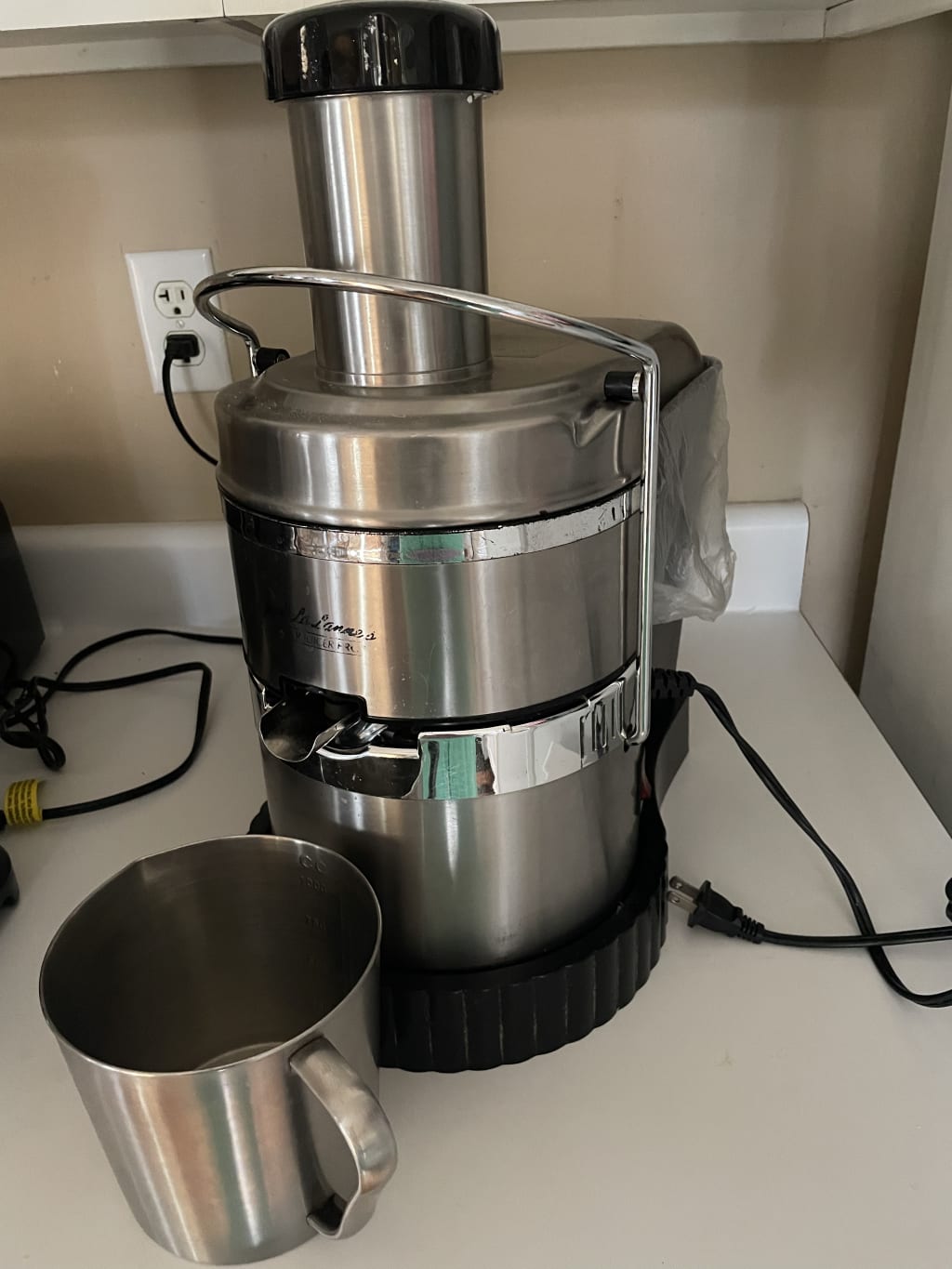Power of JLL Power Pro Juicer
Juicing as a part of healthy diet

Years ago, I believe around 2006, I bought a Jack LaLanne (JLL) Power Pro Juicer. It served me very well for a looooong time, until about a couple of years ago when in the move the only crucial plastic part in it (the juicer is mostly stainless steel, lasts forever) snapped and broke into two. The part secures the mesh filter, which means the juicer cannot work without it. It is also located on the base motor and impossible to replace, so my juicer is just standing there on the kitchen counter crippled, reminding me of its former glory.
I miss fresh fruit and vegetable juices I used to make every day, multiple times a day, and they were really good for managing my son's pancreatitis. So a couple of days ago I spent a whole morning researching new juicers. My JLL juicer is centrifugal, i.e. it extracts the juice with a centrifugal shaving force when fruits and vegetables are pushed into it through a shute. Today's better and more advanced technology is masticating, i.e. extracting the juice with a 'chewing' movement similarly to human jaws. It's considered to be better than the centrifugal extraction because it doesn't produce any heat in the process that apparently kills some of the fruits' and vegetable's nutrients.
When my JLL juicer was the "it" of juicing (the legendary fitness guru Jack LaLanne pioneered juicing as a part of healthy eating back in the late 1990s, and introduced his line of juicers in 2002 through legendary informercials featuring him and his wife), I bought it for a whopping $220, which was an incredibly high expense for a doctoral student on a stipend. I never regretted it. Today's good masticating juicers start at that price, and some are $500-600.
I've researched dozens of newer masticating models, mostly reading the poor reviews, which give you a better idea of a product's potential problems and malfunctions. While most of the new juicers seem to perform well, they are a quite a chore to clean because of the multiple parts that need to be washed and scrubbed manually. To be fair, any juicer would be a pain to clean because it requires cleaning the mesh parts separating the fruit juice from its pulp. But my JLL is so simple in its design that it is only the mesh filter that needs to be brushed manually, everything else can be rinsed off and set into a dishwasher. Another common complaint about masticating juicers is that many of them seem to start losing efficiency and literally leak the juice after 1-2 years in operation, just after they are out of warranty. Finally, many of the newer models specifications indicate that they do not even approach the level of dry pulp my JLL Power Pro produces, which is an indicator of efficiency and juice yield.
Compared to newer models, JLL has a big disadvantage: It cannot handle too soft, over-ripe or fibery fruits such as mango and bananas. They simply clog up the mesh filter and the juicer will start leaking juice on the sides. I had that happen a couple of times before I learned my lesson. The clean-up job was enough for me not to try that again. In general, the firmer the fruit the better JLL juicer will handle it. That's why one of my favorite juices is the one that is made of green apples. Compared to this, masticating juicers can handle anything, including almonds for almond milk. However, another common complaint in reviews is that not all masticating juicers do their job well and sometimes the juice will include whole pieces and clumps of whatever fruits and vegetables you use. My JLL juice sends those pieces to the pump collector.
In my research, I came across an article saying that despite the fact that JLL juicers are not produced since Jack LaLanne died, his juicers are still a standard in durability and quality. They have become a collector's item and the new ones with plastic parts (not even stainless steel like mine) sell for around $200, when back in the day they were about $90. And they are really hard to find in the "new" condition, most of them are used.
So after all my research and weighing all options, I set out to look for parts for my JLL Power Pro and found an entire motor base for $25. Not new, but certified. I ordered it and waiting for it to arrive so that I could bring my tried and trusted juicer back to life. But if I had money to splurge on a new model, I would probably buy a Kuvings masticating juicer because it seems to be the next level in juicing and because it looks so cool.
UPD: The motor arrived and my juicer works perfectly well again!
About the Creator
Lana V Lynx
Avid reader and occasional writer of satire and short fiction. For my own sanity and security, I write under a pen name. My books: Moscow Calling - 2017 and President & Psychiatrist






Comments
There are no comments for this story
Be the first to respond and start the conversation.